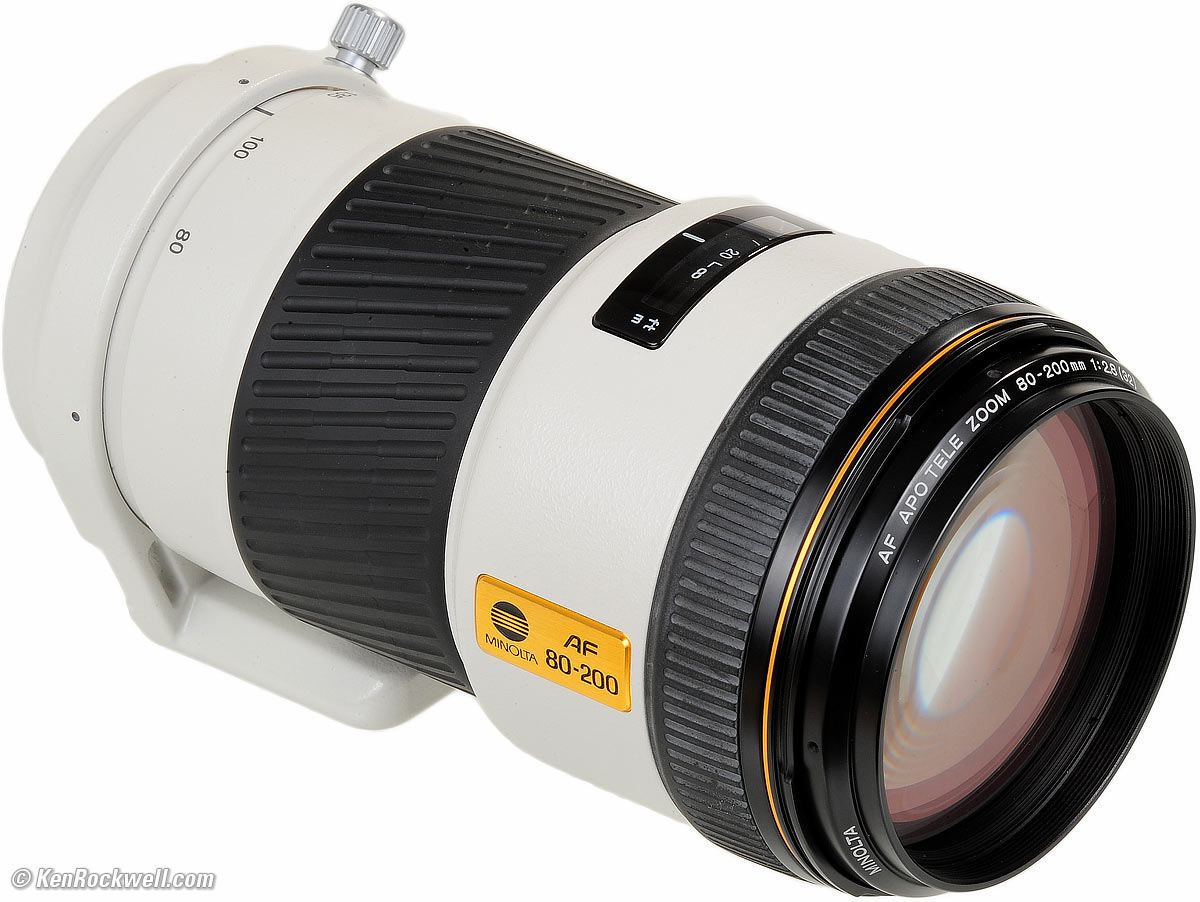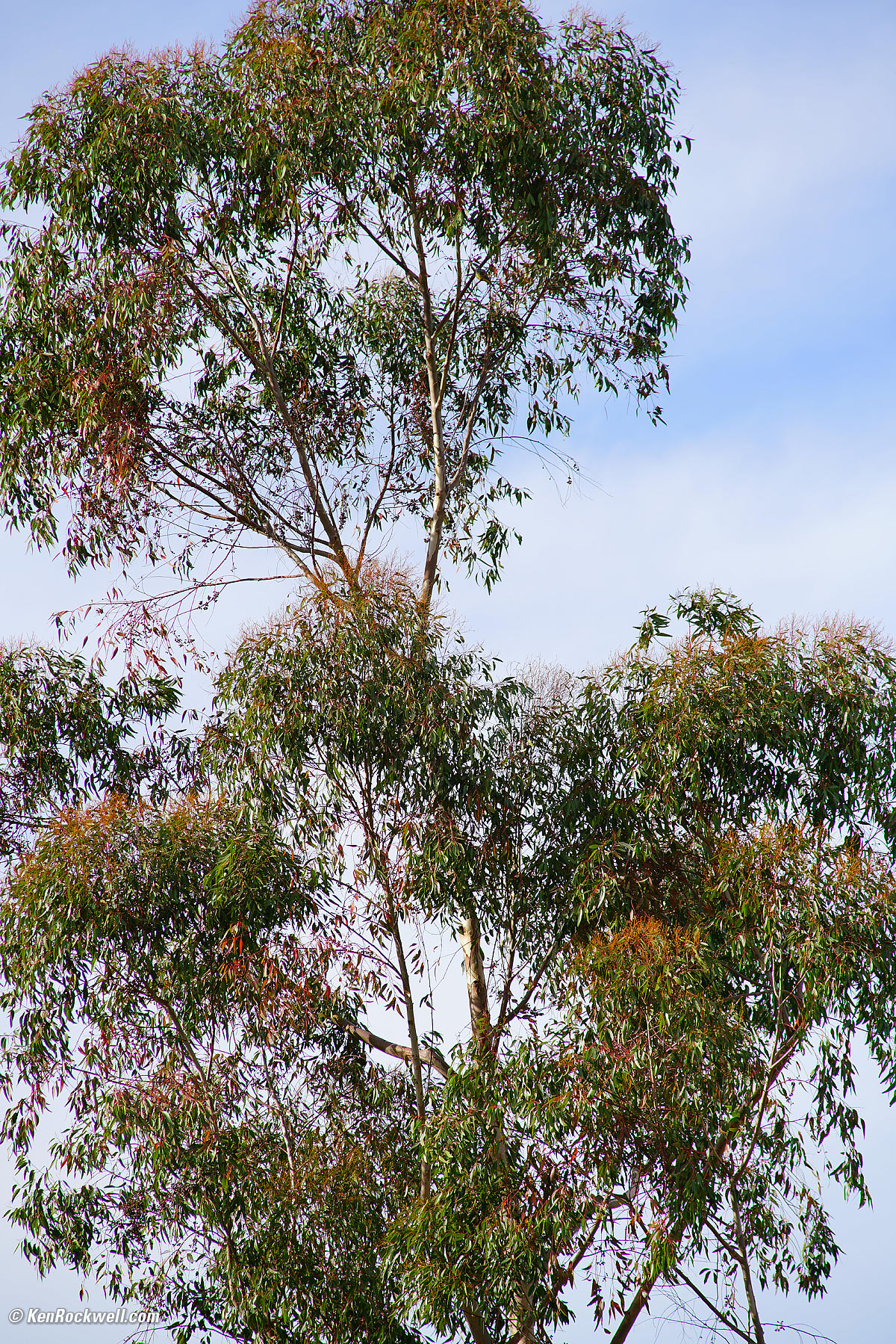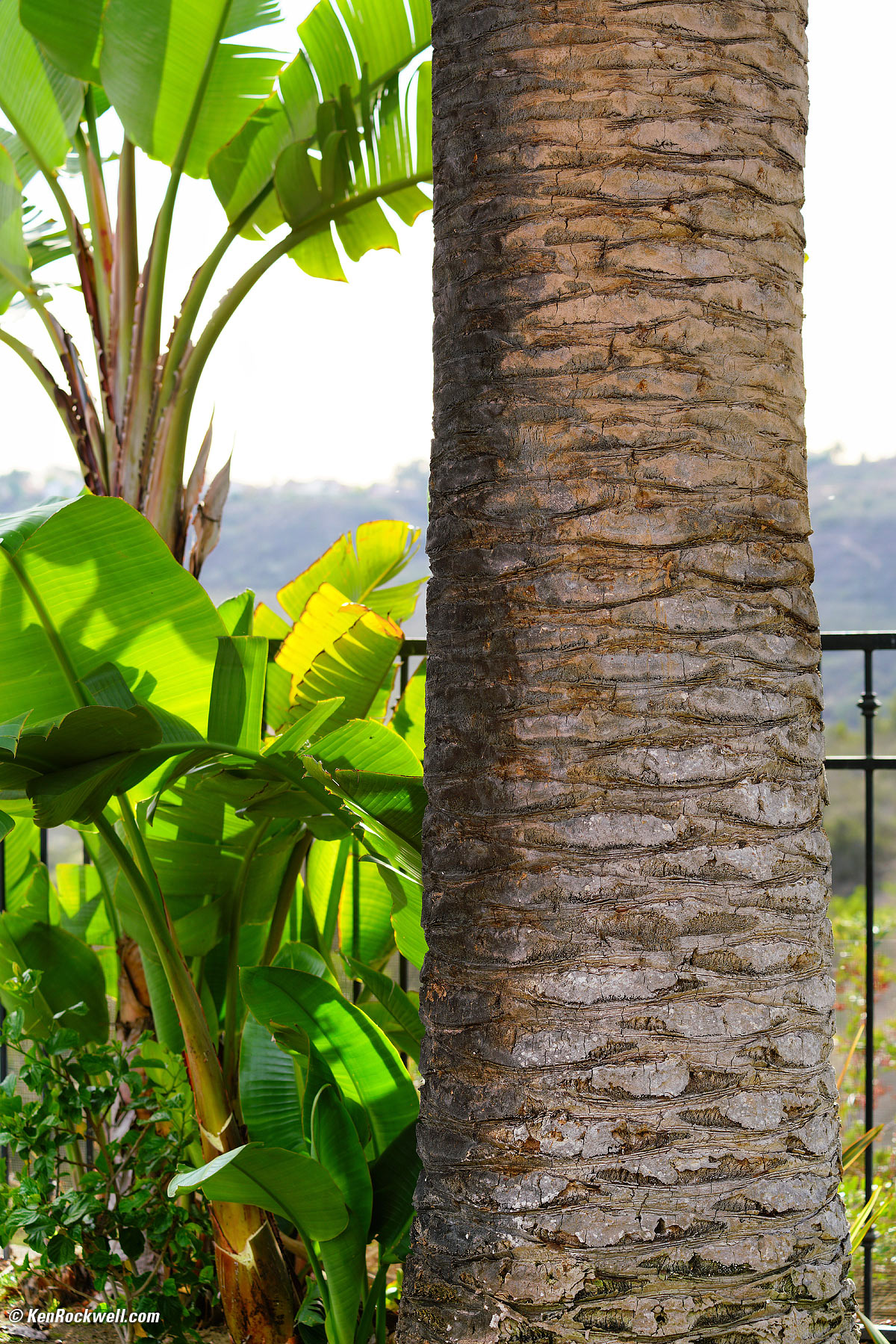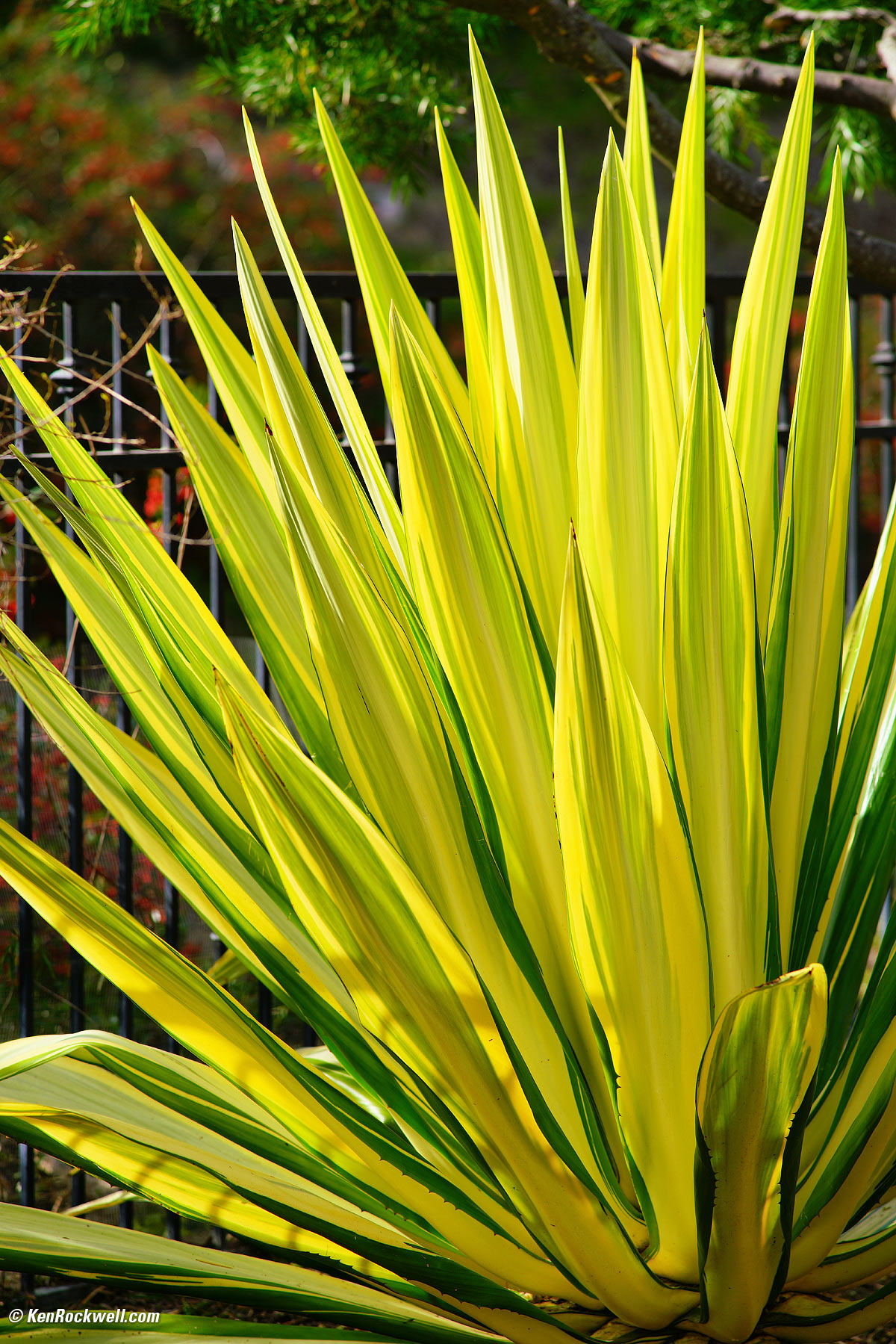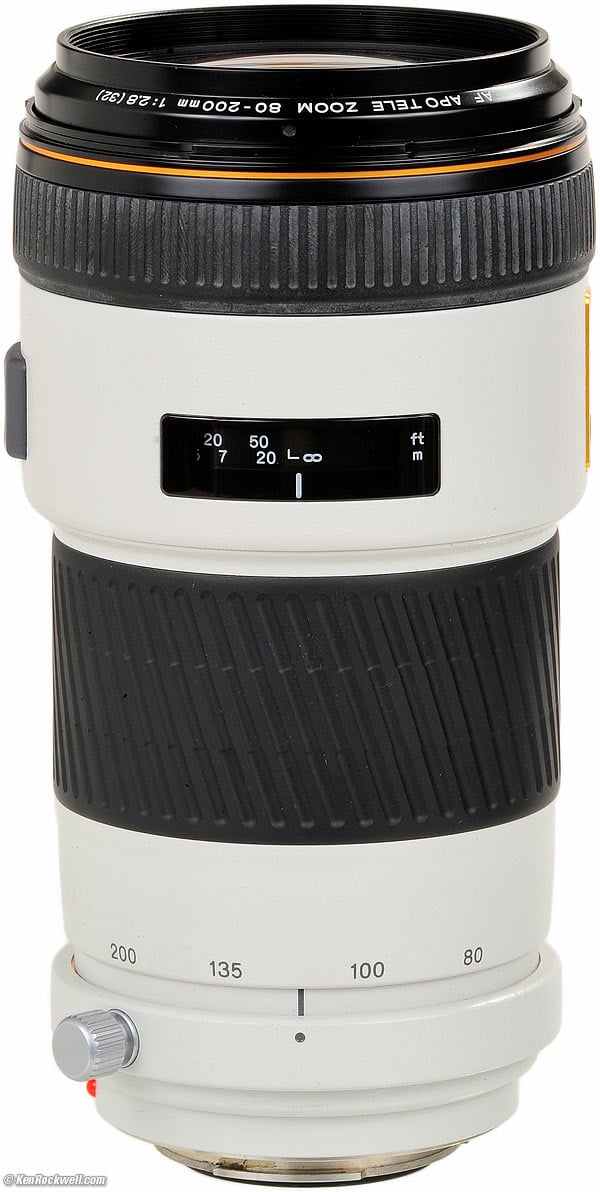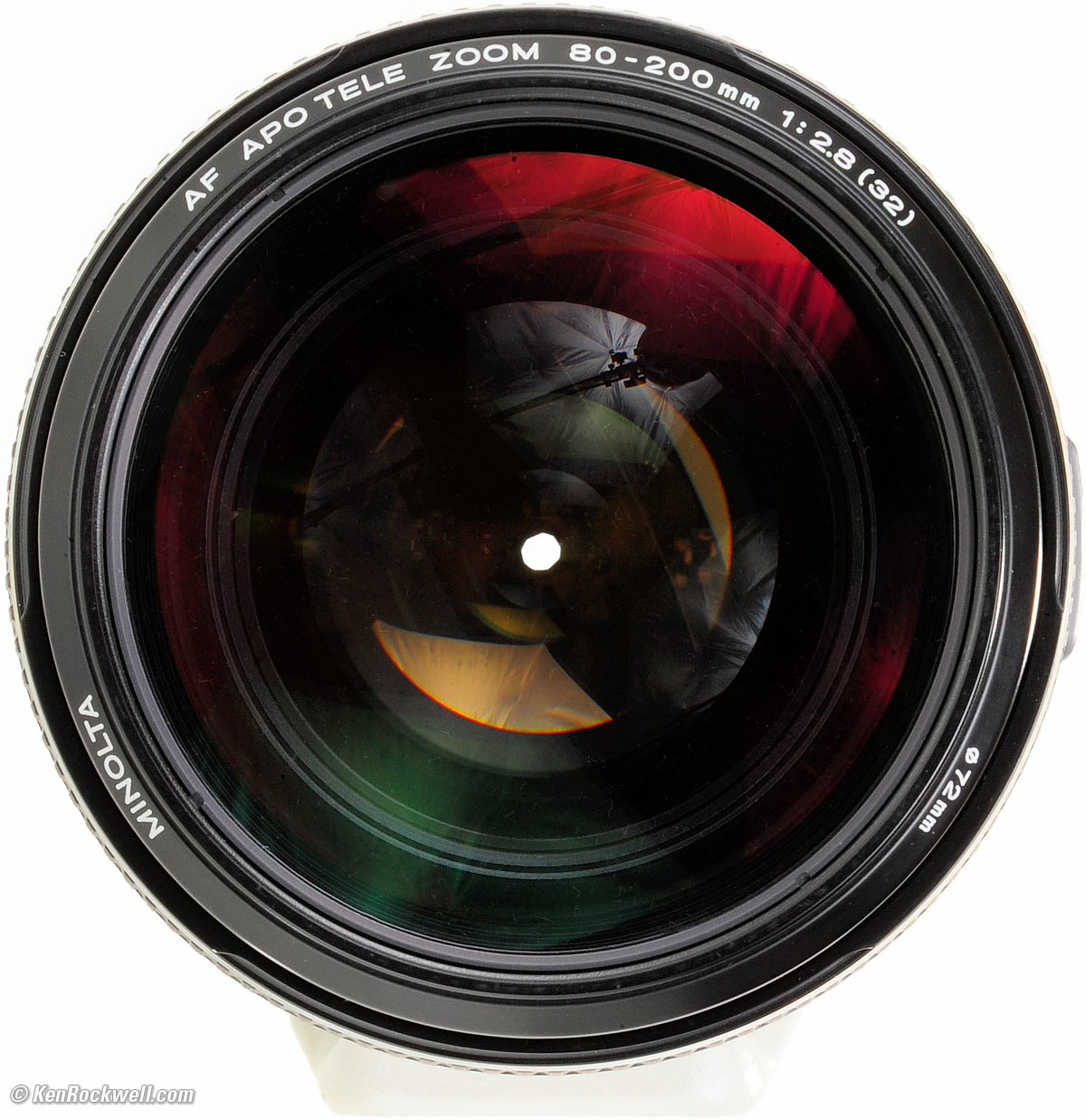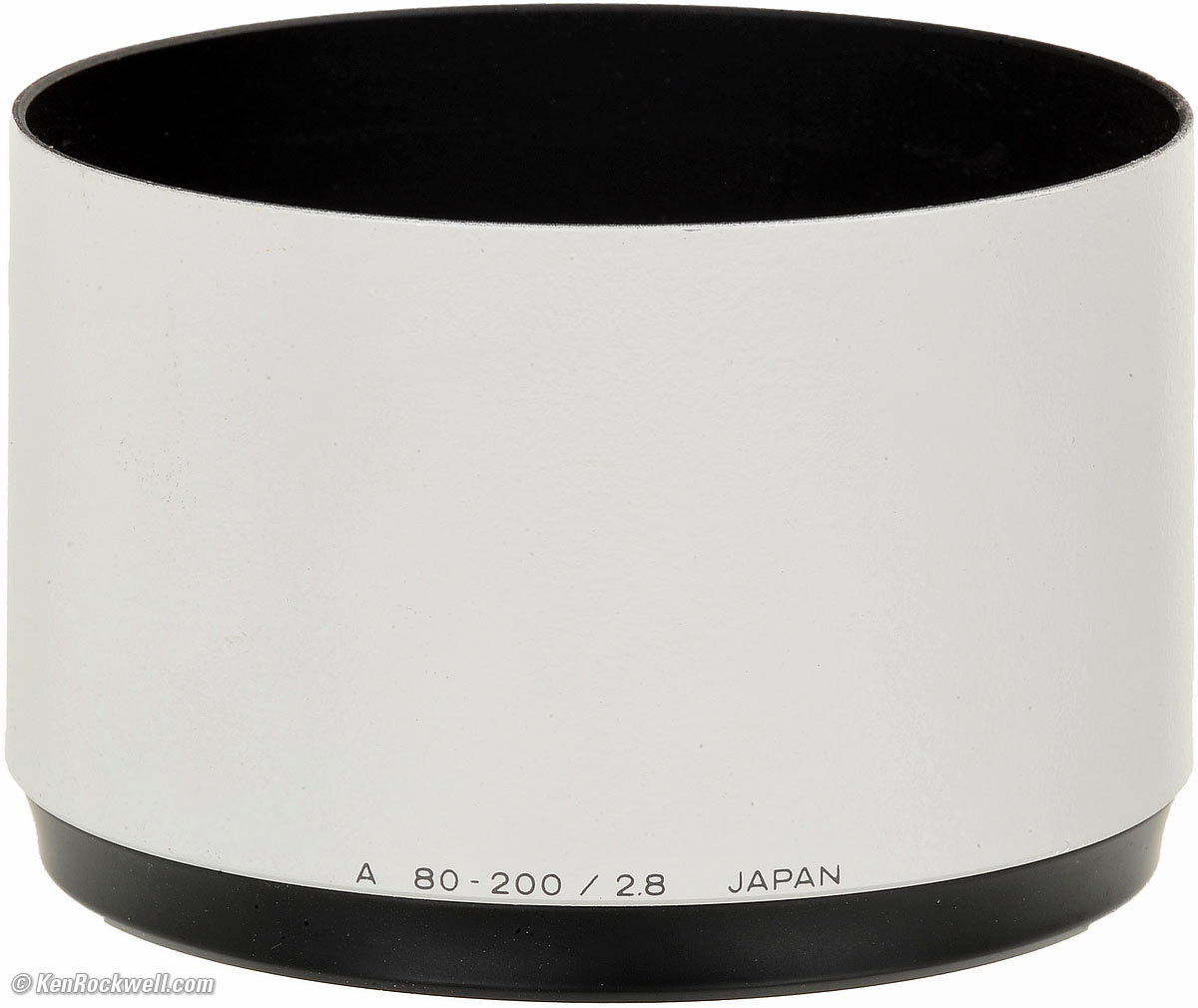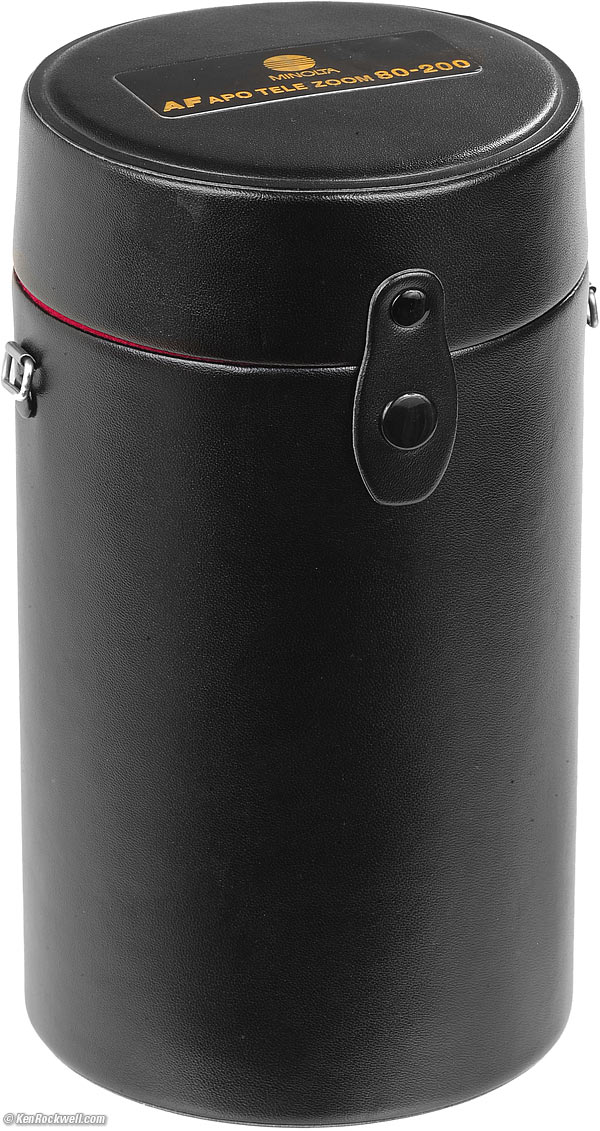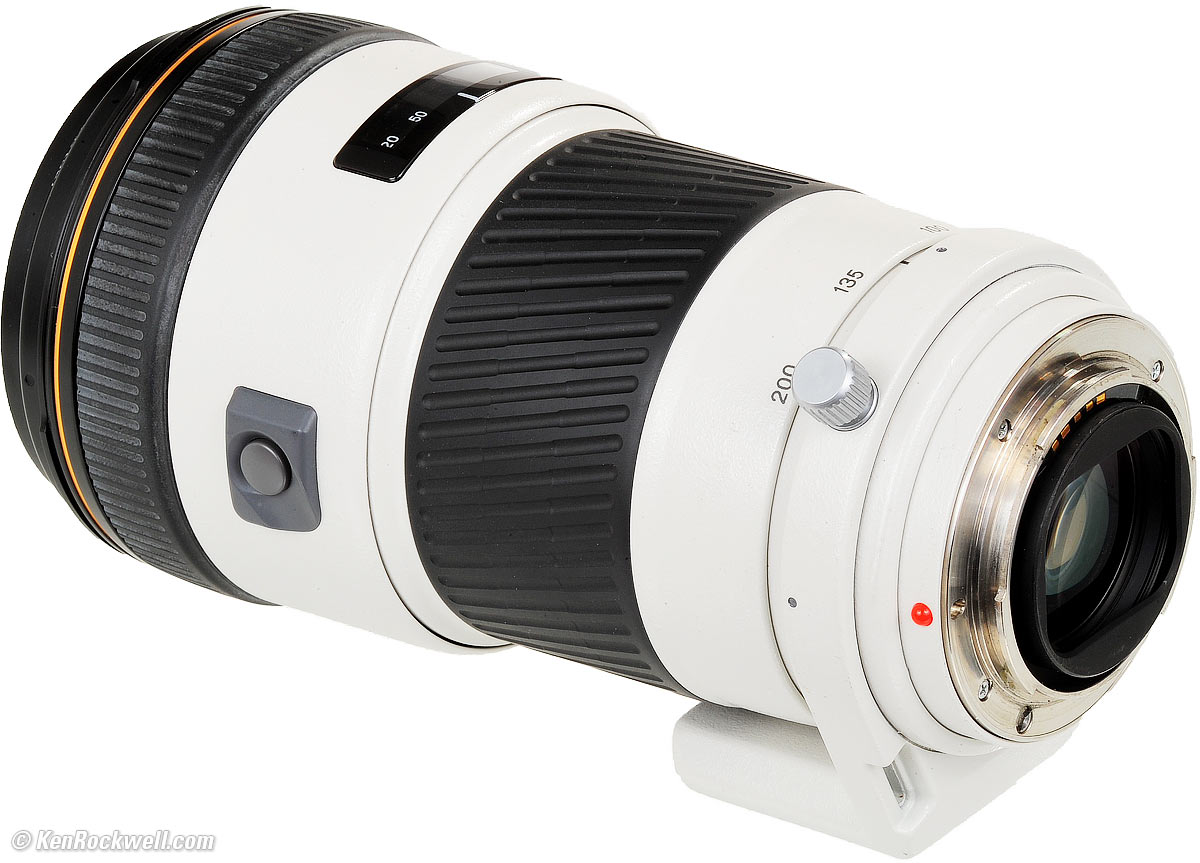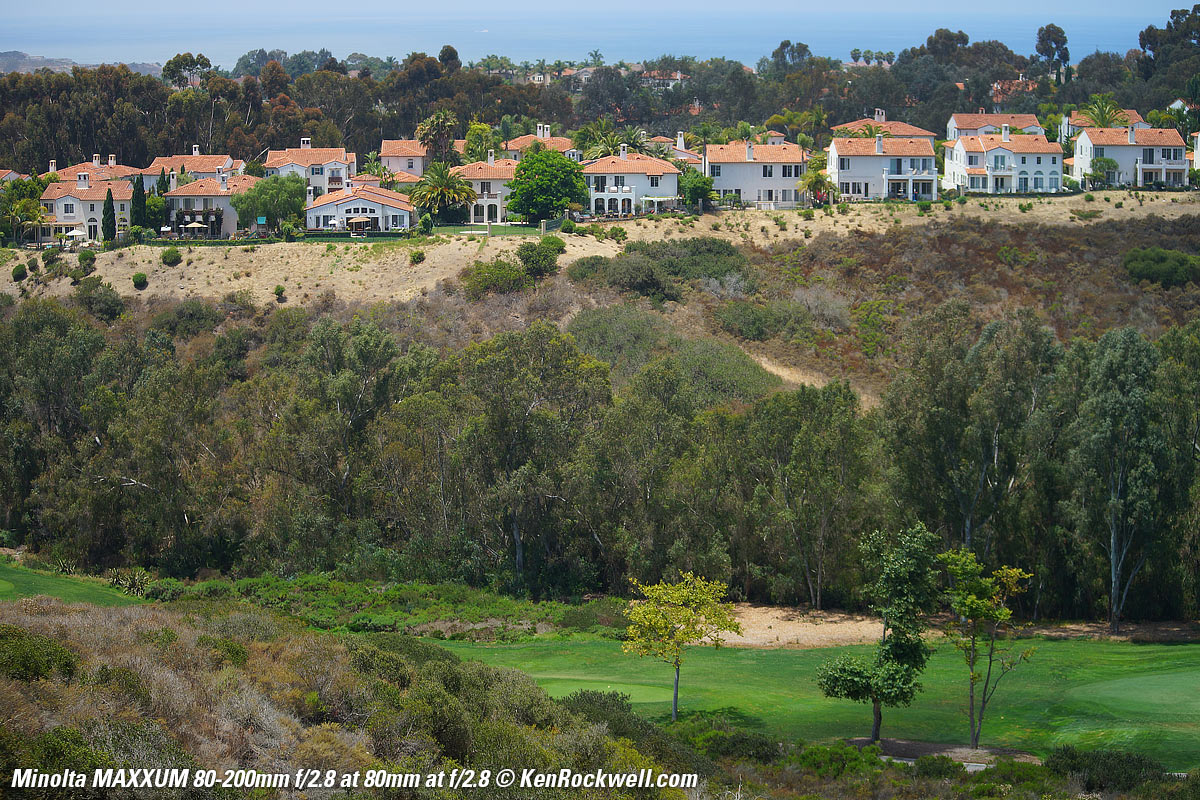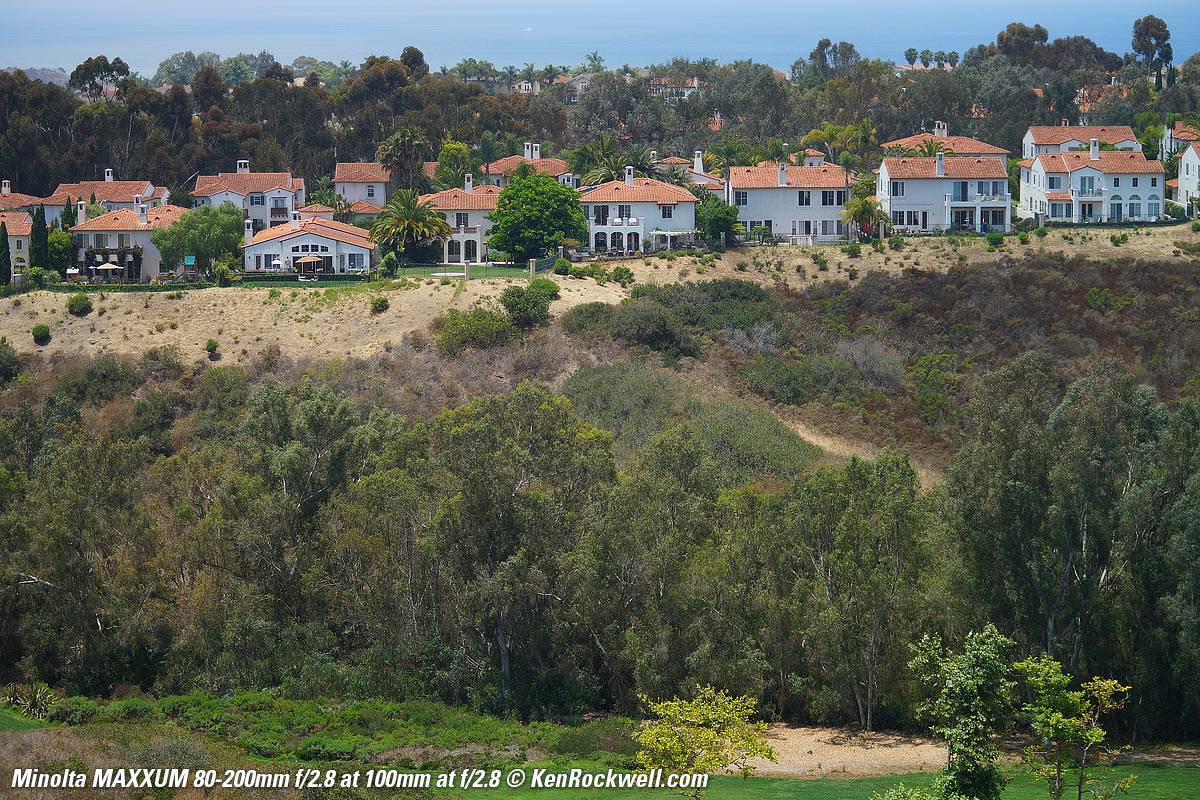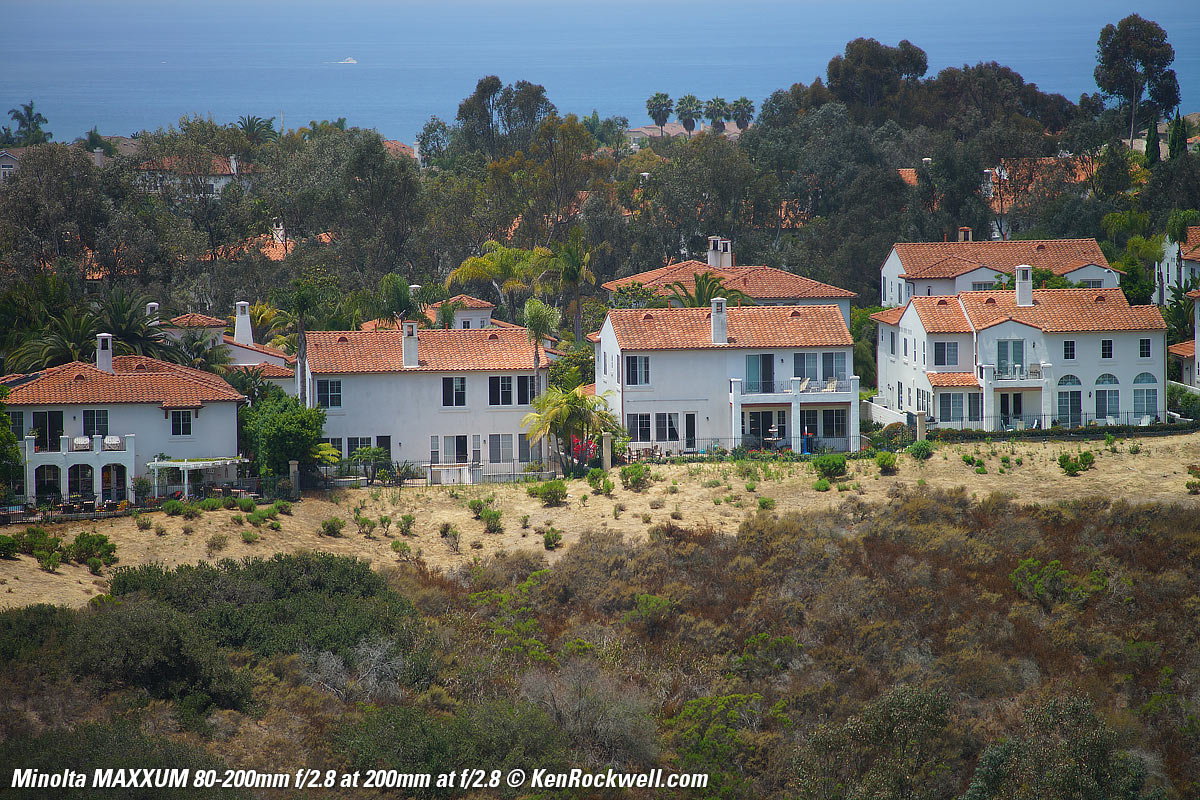Minolta 80-200mm f/2.8
APO High-Speed AF (1993-)
Full-Frame for Sony & Minolta
World's First 80-200/2.8 AF Lens
Minolta Maxxum AF 80-200mm f/2.8 APO (metal 72mm filter thread, 44.7 oz./1,267g, 6'/1.8m close focus, about $700 used if you know How to Win at eBay). bigger. My biggest source of support is when you use this link directly to them at eBay where I got mine or this link to the black version on Amazon to get yours.
This all-content, junk-free website's biggest source of support is when you use those or any of these links to approved sources when you get anything, regardless of the country in which you live. Buy only from the approved sources I use myself for the best prices, service, return policies and selection. Thanks for helping me help you! Ken.
July 2017 Minolta Minolta lenses Sony Sony Lenses Zeiss Nikon Canon All Reviews
Nikon 80-200/2.8 AF-D (new) (1997-today)
Nikon 70-200/2.8E FL (2016-today)
Canon EF 80-200/2.8 L (1989-1995)
Canon EF 70-200/2.8 IS L II (2010-today)
Sample Images
Top Sample Images Intro Format
Roof, 03 December 2015. Shot on a Sony A7R2 with Sony LA-EA4 adapter at 200mm at f/5.6 at 1/400 at ISO 100. bigger or camera-original © file to explore on your computer (mobile devices rarely display full resolutions images properly).
Eucalyptus, 03 December 2015. Shot on a Sony A7R2 with Sony LA-EA4 adapter at 200mm at f/5.6 at 1/400 at ISO 100. bigger or camera-original © file to explore on your computer (mobile devices rarely display full resolutions images properly).
Palm Tree Trunk, 03 December 2015. Shot on a Sony A7R2 with Sony LA-EA4 adapter at 80mm at f/5 at 1/125 at ISO 100. bigger or camera-original © file to explore on your computer (mobile devices rarely display full resolutions images properly).
Plant, 03 December 2015. Shot on a Sony A7R2 with Sony LA-EA4 adapter at 150mm at f/5.6 at 1/320 at ISO 100. bigger or camera-original © file to explore on your computer (mobile devices rarely display full resolutions images properly).
Introduction
Top Sample Images Intro Format
|
I buy only from these approved sources. I can't vouch for ads below. |
This Minolta Maxxum AF 80-200mm f/2.8 APO is an excellent professional telephoto zoom. It is an all-metal lens — even the hood is metal — and has great optics with fast autofocus.
Sony bought Minolta in 2006, thus Sony's DSLR-style cameras are 100% compatible with this lens. With the Sony LA-EA4 E-Mount adapter this lens also works on Sony's E-Mount mirrorless cameras. More at Compatibility.
It's super-sharp, even wide-open edge-to-edge on full-frame, and has little distortion.
Autofocus is via a rotating screw-focus front element, which moves fast, but can add torque reaction.
This is a superb professional lens for use with today's Sony cameras, which is why its used price is still high after 20 years. It's a great lens for modern cameras.
History
1987-1993: AF 80-200mm f/2.8 APO
The first version was shiny black with a gold band and a yellow footage scale.
It had the same APO optics as this lens, but with different cosmetics and was 0.7 oz./20g heavier. It has infra-red indices, which the newer white version reviewed here does not. The black version has no focus-lock button.
It is the world's first autofocus 80-200/2.8 and is model number 25891.
1993- : High-Speed AF 80-200mm f/2.8 APO
It has the same optics as the previous black version, with faster autofocus gearing, thus the moniker "High Speed AF." This white version adds a focus lock button but removes the infra-red focus indices.
Most samples have a big tacky sticker behind the focus ring that screams HIGH SPEED AF APO 80-200mm, which my sample here has lost. Presumably a previous owner with some taste removed it.
It is model number 2628-118
2003- : 70-200mm f/2.8 SSM
In 2003 Minolta replaced this lens with a completely different bigger, heavier and more expensive Minolta 70-200mm f/2.8 which focuses to 4'/1.2m and adds an SSM Super-Sonic AF Motor and a DMF mode switch.
In 2006 when Sony bought Minolta, Sony sold this lens as the Sony SAL70200G.
Good
● Focus lock button.
● Great optics.
● Fast autofocus.
● Great pro build quality.
● A little lighter than today's stabilized 70-200/2.8 lenses.
Bad
● Heavy, but still a little lighter than today's stabilized 70-200/2.8s — and Sony cameras often add stabilization in the body!
Minolta Maxxum AF 80-200mm f/2.8 APO. bigger.
Format
Top Sample Images Intro Format
This is a full-frame lens for 35mm film and full-frame digital, and will be reviewed thusly. Feel free to use this on cropped-frame cameras, too.
Compatibility
Top Sample Images Intro Format
It works perfectly on its native Minolta MAXXUM mount, which is the same thing as Sony's Alpha mount. Sony bought Minolta back in 2006.
When used on the full-frame digital Sony A99 or any other Sony with sensor-shift stabilization it has image stabilization.
It works perfectly on the Sony A99, except that the AF-D Depth Map AF (whatever that is) and the automatic lens corrections don't work. So what, the images look great and everything else works, like face recognition and all the focus modes including Direct Manual Focus (DMF) override, so all is well.
It also has super-fast autofocus used on Sony's cameras.
Use it with the Sony LA-EA4 adapter for full fast autofocus and data transfer on all Sony E-mount NEX and A-series mirrorless cameras, like the state-of-the-art Sony A9. The focus lock button works, too.
The lens' tripod collar clears the LA-EA4.
The only catch is that this is a flat-field lens optimized for 35mm film and Sony's DSLR-style cameras like the A99. Sony's full-frame mirrorless E-mount cameras are optimized for E-mount lenses which have slightly curved fields, and therefore while everything functions flawlessly with the Sony LA-EA4 adapter on cameras like the state-of-the-art Sony A9 and Sony A7R2, the optical performance at the sides on E-mount cameras won't be as good.
If you demand the best on an E-mount camera, get the state-of-the-art Sony 70-200/2.8 GM.
Specifications
Top Sample Images Intro Format
Name
Minolta calls this the Minolta AF APO TELE ZOOM 80-200mm f/2.8 (32).
AF: Autofocus.
APO: Apochromatic correction, meaning super-sharp.
TELE ZOOM: A telephoto zoom lens.
(32): The smallest f/stop.
Optics
16 elements in 13 groups.
Multicoated.
Front-group focus.
Internal zoom.
Diaphragm
Minolta Maxxum AF 80-200mm f/2.8 APO. bigger.
9 rounded blades.
Round at large apertures, straight at small apertures.
Mechanically controlled.
Stops down to f/32.
Focal Length
80 ~ 200 mm.
When used on APS-C, it sees the same angles of view as a 120 ~ 300mm lens sees when used on a full-frame or 35mm camera.
See also Crop Factor.
Angle of View
30.2° ~ 12.3º diagonal on full-frame and 35mm.
20° ~ 8° on APS-C.
Autofocus
Rotating front group, driven by a motor in the camera via a screw connection.
As the lens autofocuses the filter thread and front group and even the focus ring all rotate as the front group moves in and out. This all moves while the hood bayonet mount on the stationary outer lens barrel and thus the hood does not move as focussed.
Focus Scale
Yes.
Infinity Focus Stop
No.
Depth of Field Scale
No.
Infrared Focus Index
No, but the earlier black model has them.
Close Focus
6 feet (1.8 meters).
Maximum Reproduction Ratio
1:6.7 (0.15×).
Image Stabilizer
No, but works with in-camera sensor-shift stabilization.
Filters
Metal 72 mm filter thread.
Tripod Collar
Non-removable collar, no click stops.
Has both standard ¼″ × 20 TPI and professional heavy-duty ⅜″ threads.
The collar has slots for a neck strap.
Hood
6628-810 Hood, Minolta Maxxum AF 80-200mm f/2.8 APO. bigger.
Yes, bayonet hood included.
Metal barrel with plastic bayonet mount.
Part number 6628-810.
Case
Minolta Maxxum AF 80-200mm f/2.8 APO. bigger.
Yes, red velvet-lined tubular vinyl case included.
Size
3.46" maximum diameter × 6.53" extension from flange at infinity; 6.89" extension at close-focus distance.
88mm maximum diameter × 166mm extension from flange at infinity; 175mm extension at close-focus distance.
Weight
44.705 oz. (1,267.4 g) actual measured weight.
Quality
Made in Japan.
Announced
1993.
Price, USA
$700 used if you know How to Win at eBay, July 2017.
$800 used if you know How to Win at eBay, November 2015.
$1,200 used if you know How to Win at eBay, June 2013 when the full-frame digital Sony A99 came out.
Performance
Top Sample Images Intro Format
Overall Autofocus Manual Focus
Breathing Bokeh Distortion Ergonomics
Falloff Filters Lateral Color Fringes
Mechanics Sharpness Tripod Collar
Overall
The Minolta 80-200mm f/2.8 works very well, especially on a Sony A99, with ultra-fast autofocus and great sharpness.
It's a top-notch professional lens.
Autofocus
AF is fast, with one full turn (two half-turns) of the AF screw bringing it from infinity down to 20 feet.
My sample holds focus as zoomed.
Manual Focus
Manual focus flicks with a fingertip.
The front elements and filter threads rotate as the lens focuses.
Focus Breathing
Focus breathing is the image changing size as focused in and out. It's important to cinematographers because it looks funny if the image changes size as focus gets pulled back and forth between actors. If the lens does this, the image "breathes" by growing and contracting slightly as the dialog goes back and forth.
The image from this Minolta 80-200/2.8 gets bigger as focussed more closely.
Bokeh
Bokeh, the feel or quality of out-of-focus areas as opposed to how far out of focus they are, is very good.
Here are two snaps from headshot distance. Click either for the camera-original file:
Weather station, 03 December 2013. Shot with Sony A7R2. bigger or camera-original © file to explore on your computer (mobile devices rarely display full resolutions images properly).
Weather station, 03 December 2013. Shot with Sony A7R2. bigger or camera-original © file to explore on your computer (mobile devices rarely display full resolutions images properly).
Distortion
The Minolta 80-200 2.8 has only minor to moderate distortion; it's still better than many zooms today. It has moderate barrel distortion at 80mm and moderate pincushion distortion at 200mm. It's mild enough that you'll never see it unless brick walls are your thing, and it has no visible distortion from about 90 to 135mm.
What little distortion it has can be completely corrected for critical use by plugging these figures into Photoshop's lens distortion filter. These aren't facts or specifications, they are the results of my research that requires hours of photography and calculations on the resulting data.
on Full Frame and 35mm |
at 10'/3m |
at 30'/10m |
80mm |
+2.00 |
+2.70 |
100mm |
+0.50 |
+1.00 |
135mm |
-1.00 |
-1.00 |
200mm |
-2.50 |
-2.00 |
© 2017 KenRockwell.com. All rights reserved.
Ergonomics
This is a straight-ahead metal lens.
The only weirdness is that the focus ring is always connected to the AF system, so it rotates as the lens autofocuses. Keep your hand off it except when you're manually focussing.
While the front group rotates as it focuses, the hood doesn't move.
You have to move a switch on your camera to swap between auto and manual focus, or use Sony's DMF (Direct Manual Focus) mode for immediate manual-focus override.
The AF lock button is a dream. Hold it to hold focus; ideal for recomposing or if your subject is temporarily blocked by something. It works both on native Alpha-mount cameras as well as mirrorless cameras with the LA-EA4 adapter.
Zooming is well damped; it takes two fingers to move well.
Manual focus flicks with a fingertip.
My sample holds focus as zoomed.
Falloff
Falloff even on on full-frame is negligible. Even without correction it's always invisible.
I've greatly exaggerated the falloff by shooting a gray field and placing these against a gray background:
Falloff on Full-Frame and 35mm at infinity, no correction.
© 2017 KenRockwell.com. All rights reserved. |
Filters, use with
There's no need for thin filters.
Go ahead and use your standard rotating polarizer and grad filters.
Lateral Color Fringes
There are little to no lateral color fringes as shot on 35m film or a flat-field camera like the Sony A99.
There are none at 80mm or 100mm on an uncorrected 24 MP Sony A99.
There are only the very slightest green-magenta fringes at 135mm on an uncorrected 24 MP Sony A99.
There are only very minor yellow- green/magenta fringes at 200mm on an uncorrected 24 MP Sony A99.
Adapted to a full-frame E-Mount camera with their new active curved-field sensors there can be much more lateral color. Use the state-of-the-art Sony 70-200/2.8 GM if you demand the best on mirrorless cameras.
Mechanical Quality
Minolta Maxxum AF 80-200mm f/2.8 APO. bigger.
This is a beautiful and precise all-metal lens, inside and out.
I wish everything was made this well today! Even pro lenses today have plastic all over, while this beauty is 100% alloy. Bravo!
Hood
Metal barrel with plastic bayonet mount.
Front Bumper
None.
Filter Threads
Metal.
Front Barrel
Metal.
Hood Bayonet Mount
Metal.
Gold Band
14 karat gold filled.
Focus Ring
Rubber-covered metal.
Mid Barrel
Section with focus window and lock button: metal.
Zoom Ring
Rubber-covered metal.
Rear Barrel
Metal.
Tripod Collar
Metal collar and metal lock screw.
The collar doesn't come off.
Rotates 360º with no clicks.
Has both standard ¼″ × 20 TPI and professional heavy-duty ⅜″ threads.
Identity
Engraved and filled with paint around filter thread.
14 karat gold-filled debossed metal plate near focus window.
Internals
All metal!
Moisture Seal at Mount
No.
Mount
Dull chromed metal.
Markings
Identity, serial number, zoom index and "JAPAN:" engraved and filled with paint.
Focus scale, focus index and zoom ring: paint.
Serial Number
Engraved in black on bottom of barrel.
Date Code
None found.
Noises When Shaken
Moderate rattling from the focus system and tripod collar. Hold these down and it rattles much less.
Made in
Japan.
Sharpness
It's super-sharp corner-to-corner on full-frame, even wide-open at f/2.8. Bravo!
The only limitation to picture sharpness will be your skill as a photographer.
Here are samples shot at infinity (OK, 440 meters) shot wide-open on a full-frame 24MP Sony A99:
Suburbs, 18 June 2013. Shot on a Sony A99 at ISO 100. bigger or camera-original © file to explore on your computer (mobile devices rarely display full resolutions images properly).
Suburbs, 18 June 2013. Shot on a Sony A99 at ISO 100. bigger or camera-original © file to explore on your computer (mobile devices rarely display full resolutions images properly).
Suburbs, 18 June 2013. Shot on a Sony A99 at ISO 100. bigger or camera-original © file to explore on your computer (mobile devices rarely display full resolutions images properly).
Suburbs, 18 June 2013. Shot on a Sony A99 at ISO 100. bigger or camera-original © file to explore on your computer (mobile devices rarely display full resolutions images properly).
The shots of the houses here are with the A99 on which this lens is deal.
While this lens is super-sharp as you can see, the results aren't as sharp on the sides when adapted to the latest E-mount cameras like the Sony A9 and Sony A7R2 because these cameras use advanced sensors optimized for slightly curved-field lenses, which this lens is not. If you want the last word in sharpness on the latest E-mount cameras, use a Sony E-mount GM lens like the superb Sony 70-200/2.8 GM whose optics are optimized for these latest cameras.
Look at the samples at the top and judge for yourself how you like this lens on the Sony A7R2.
Tripod Collar
The metal tripod collar is is very precisely made. It never comes off and it doesn't get in the way.
It has both ¼″ and ⅜″ threads.
Its lock screw works smoothly and is all metal.
The collar has slots for a neck strap.
This collar is idea: small, precise, tough and never gets in the way or gets lost.
Recommendations
Top Sample Images Intro Format
This white 80-200/2.8 performs fantastically on Sony's DSLR-style A-mount cameras and Minolta's 35mm MAXXUM cameras.
For less money the black version has the same optics, but with slower autofocus and without the great focus lock button.
Both versions are easy to find at eBay; be sure to know How to Win at eBay.
With the Sony LA-EA4 adapter this lens is completely compatible with Sony's hot new mirrorless E-mount cameras and has fast autofocus and 100% data interchange, however these cameras have a new breed of advanced sensors optimized for special new E-mount lenses. Therefore this lens won't seem as insanely sharp at larger apertures on the sides as with Sony's newest native E-Mount lenses. Look at the samples at the top and judge for yourself how you like this lens on the Sony A7R2.
If you're using a top-of-the-line new full-frame mirrorless E-mount Sony, you deserve a state-of-the-art lens optimized for it, which is the Sony 70-200.2.8 GM or Sony 70-200/4 G, either of which will give sharper corners at large apertures on these cameras — if you care. This Minolta lens is ultra-sharp, just that the new breed of Sony cameras demands a different kind of lens for the best results.
The very best protective filter is the 72mm Hoya multicoated HD3 UV which uses hardened glass and repels dirt and fingerprints. This lens is worth this filter, and filters never wear out so you'll be using this filter the rest of your life.
For less money, the B+W 72mm 010 is an excellent filter, as are the multicoated version and the basic multicoated Hoya filters, but the Hoya HD3 is the toughest and the best.
Filters last a lifetime, so you may as well get the best. The Hoya HD3 stays cleaner than the others since it repels oil and dirt.
This all-content, junk-free website's biggest source of support is when you use those or any of these links to approved sources when you get anything, regardless of the country in which you live. I use the stores I do because they ship from secure remote warehouses where no one gets to touch your new camera before you do. Buy only from the approved sources I use myself for the best prices, service, return policies and selection.
Thanks for helping me help you!
Ken, Mrs. Rockwell, Ryan and Katie.
© Ken Rockwell. All rights reserved. Tous droits réservés. Alle Rechte vorbehalten.
Help Me Help You
I support my growing family through this website, as crazy as it might seem.
The biggest help is when you use any of these links when you get anything. It costs you nothing, and is this site's, and thus my family's, biggest source of support. These places always have the best prices and service, which is why I've used them since before this website existed. I recommend them all personally.
If you find this page as helpful as a book you might have had to buy or a workshop you may have had to take, feel free to help me continue helping everyone.
If you've gotten your gear through one of my links or helped otherwise, you're family. It's great people like you who allow me to keep adding to this site full-time. Thanks!
If you haven't helped yet, please do, and consider helping me with a gift of $5.00.
As this page is copyrighted and formally registered, it is unlawful to make copies, especially in the form of printouts for personal use. If you wish to make a printout for personal use, you are granted one-time permission only if you PayPal me $5.00 per printout or part thereof. Thank you!
Thanks for reading!
Mr. & Mrs. Ken Rockwell, Ryan and Katie.
